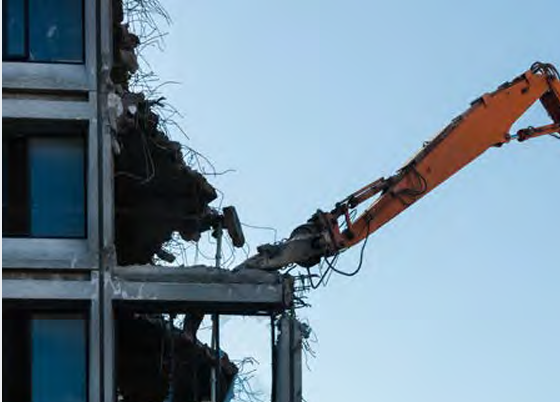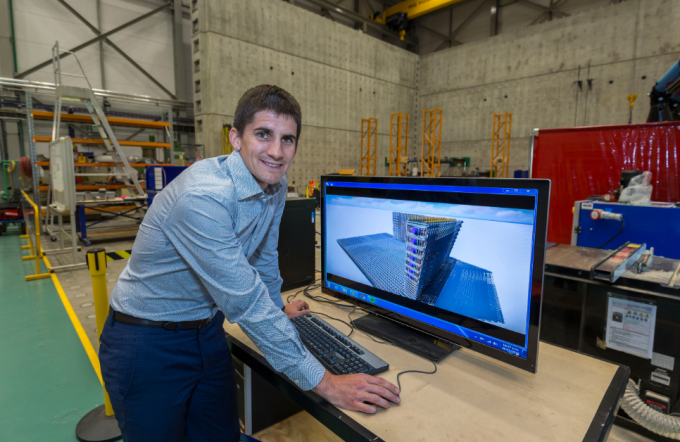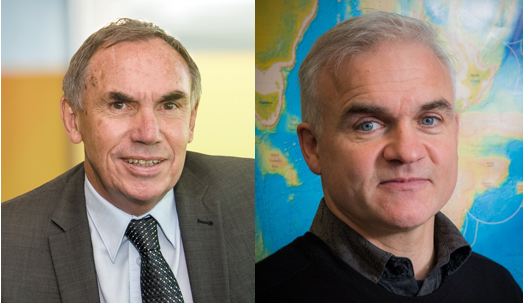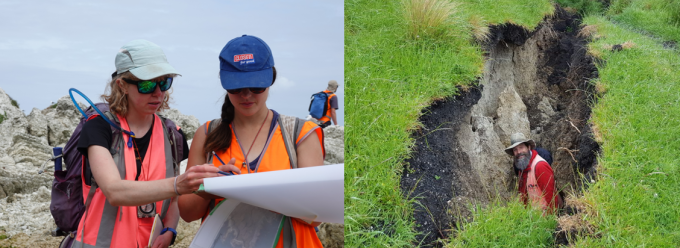Impact story: Shaking up earthquake modelling and engineering

It’s been more than 15 years since the Canterbury earthquakes began a revolution in how we understand the way earthquakes affect Aotearoa New Zealand. Professor Brendon Bradley FRSNZ, Civil and Natural Resource Engineering lecturer and researcher at the Te Whare Wānanga o Waitaha - University of Canterbury, and others around Aotearoa New Zealand, have spent their entire careers working to understand ground-shaking and its impact on our homes and the built environment.
Unheard of 15 years ago, Bradley’s earthquake engineering research explains how what’s on the surface of the earth affects ground-shaking. Different kinds of shaking at different frequencies can cause vastly different effects on different soils.
For example, relatively strong high-frequency shaking in the Christchurch earthquake of February 2011 created a lot of liquefaction and collapse of unreinforced masonry buildings, whereas the Kaikōura quake in November 2016 caused relatively stronger low-frequency shaking 60 kilometres away in Wellington, damaging multistorey buildings with precast concrete floors.
After the 2010-2011 Canterbury earthquake sequence began, Bradley received his first Marsden Fund grant to understand the role of different physical factors in ground-shaking, taking into account the three-dimensional nature of the earth.
Some of the most instrumental funding sources, from my perspective, were definitely Marsden Fund grants and the Rutherford Discovery Fellowship, not so much in size, but in terms of the flexibility of that funding.

Professor of Earthquake Engineering, Brendon Bradley, also co-founder of QuakeCore NZ Centre for Earthquake Resilience
The increase in ability of high-performance computers to cope with immense amounts of data and access to those supercomputers has also been vital. Bradley worked on that first Marsden Fund grant with Robert Graves, a well-respected earthquake modeller from the United States Geological Service.
“He was the one that ran some first calculations and spoon-fed me how to do it,” says Bradley. “More than a decade later, I’ve got five software developers in our team to keep the ecosystem working.”
Despite these advances, we cannot predict earthquakes. We can, however, forecast them. A seismic hazard forecast says how likely it is that ground-shaking caused by an earthquake will happen in a given area, over a given time frame.
New Zealand’s first National Seismic Hazard Model was the brainchild of Professor Mark Stirling (Ōtākou Whakaihu Waka - University of Otago). Stirling brought everything geologists knew about earthquakes in Aotearoa New Zealand into a singular model. The very first National Seismic Hazard Model (NSHM) was produced in 1998 and subsequently updated in 2002 and 2010, and was used to inform the 2004 Building Code.
Bradley’s engineering work was a part of the new NSHM, launched by GNS Science in 2022. Produced by more than 50 scientists, engineers and stakeholders working together for just over 2 years, it amalgamated nearly a million different models into one big shaking hazard forecast of potential ground-shaking.
The 2022 NSHM forecasts are used by government and others to estimate risk and to make riskbased decisions. Under the 2022 NSHM, seismic hazard increased almost everywhere in the country, compared to what we knew previously. This is not unexpected, because of scientific and technological advances, including better understanding of the Hikurangi Subduction Zone and the Alpine Fault.

(L) Dr Kelvin Berryman QSO FRSNZ and (R) Professor Rupert Sutherland FRSNZ, who have both been supported by the Marsden Fund to research the Alpine Fault.
For designers, property developers, central government, and local councils, precision engineering informed by earthquake research really matters. Every building will perform differently depending on structural layout, the ground that supports it, construction materials, and how much damage the owners are willing to accept at different levels of shaking.
At the time of writing, the New Zealand Building Code requires a building designed to last 50 years to withstand shaking with a 10 percent likelihood of being exceeded in its lifetime. This doesn’t encompass a single earthquake right underneath a specific place, but all the shaking a building could experience in its location.
For the past three years, Professor Ken Elwood has been seconded as Chief Engineer (Building Resilience) to the Ministry of Business, Innovation and Employment and the National Hazards Commission Toka Tū Ake. He is working to update the piece of the Building Code that takes account of seismic loading (or the standard of shaking expected in that building’s location in an earthquake), and was last changed in 2004.
“A significant update to the Building Code does not happen because of a researcher’s efforts or a few research papers, but because of a national consensus-building programme, with strong international support,” says Elwood. Bradley’s second Marsden Fund grant, awarded in 2021, involves using supercomputers to rapidly iterate earthquake simulations and improve predictions further.
Elwood suggests that the impact of Bradley’s work will be far more influential in the future than it is today. Bradley himself is enthusiastic: “Whether you need to spend $5 billion on a new hospital or whether you can get it done for $3 billion makes a huge difference. If we can quantify what’s going to happen better and be smarter from an engineering perspective, then we won’t gold-plate things that don’t need to be gold-plated,” says Bradley.
He’s thankful for the support: “Some of the most instrumental funding sources, from my perspective, were definitely Marsden Fund grants and the Rutherford Discovery Fellowship, not so much in size, but in terms of the flexibility of that funding.”
Bradley can see a relatively clear pathway to where earthquakes become just a temporary inconvenience to those of us in Aotearoa New Zealand, rather than something that causes devastation. “That’s not to trivialise the situation, because the pathway may take 50-plus years, but it’s possible to imagine a future where they are just a nuisance,” says Bradley.

(L) Dr Camilla Penney with research assistant and (R) Dr Russ van Dissen, both received Marsden Fund grants to study faultline rupture and interconnection.
- Ceridwyn Roberts, 2025.
